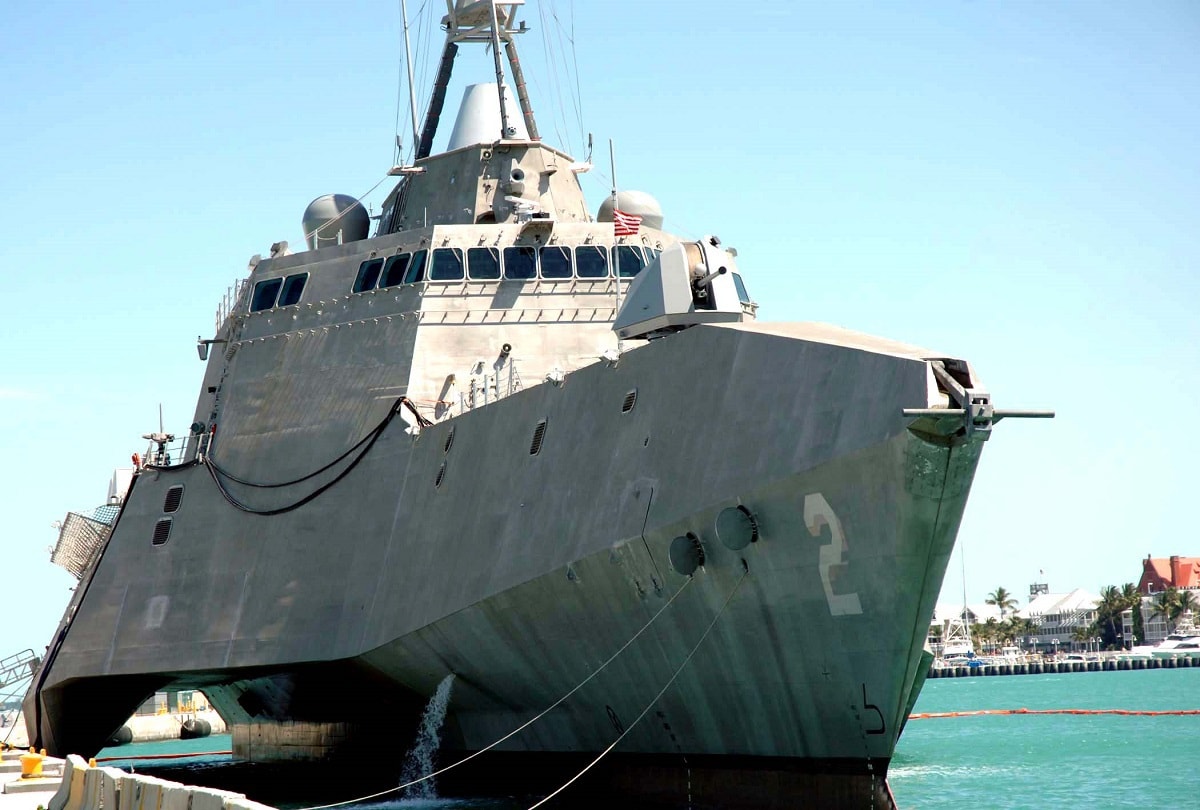During the Second World War, the United States built dozens of warships that would be mothballed soon after the end of hostilities. Such a surge was needed due to the conflict, and after its conclusion, the massive fleet was no longer required, even during the early stages of the Cold War.
Such recollections are noteworthy this month, as the U.S. Navy officially decommissioned a warship that cost $362 million to build, after it served fewer than five years. Its run at sea was at least two decades shorter than expected.
The USS Sioux City (LCS-11), a Freedom-variant littoral combat ship, was decommissioned in Mayport, Florida, on Aug. 14. The Navy noted that as an operational unit, USS Sioux City and its crew played an important role in the defense of our nation and maritime freedom. It added that the vessel and its sailors were key to determining the operational success and deployment capabilities of today’s LCS platform.
LCS-11 was commissioned into service with the U.S. Navy on Nov. 17, 2018.
“Though our ship’s service ends today, her legacy does not. For years to come the Sailors who served onboard will carry forth lessons learned and career experiences gained,” said Capt. Daniel Reiher, Commander, Littoral Combat Ship Training Facility Atlantic. “As those lessons and experiences are used to forge those that follow us, the legacy of SIOUX CITY will strengthen our Navy for generations to come.”
The Costly Mistake
The USS Sioux City is just the latest LCS to see its career cut short.
It was two years ago that the United States Navy decommissioned the USS Independence (LCS-2) with little fanfare in a pier-side ceremony in San Diego. The namesake of the Navy’s Independence class of LCS left the fleet after just 11 years in service, far shorter than the 25-year lifespan the Navy had envisioned for the fast-moving warships designed to operate close to shore.
The USS Freedom (LCS-1) was also decommissioned in September 2021.
The LCS program began when the U.S. military was engaged in the Global War on Terror. The ships were seen as ideal for combating missile-firing boats and even small submarines. The stealthy surface combatants were also seen as capable of defeating anti-access and asymmetric threats in littoral or near-shore waters.
The LCS was unique in that the Navy opted for two classes of the vessels — each slightly smaller than the Oliver Hazard Perry-class frigate. The first was the Freedom class, which was designed by Lockheed Martin and built by Marinette Marine in Marinette, Wisconsin. It was the smaller of the two classes, a steel-hulled 387-foot warship that utilized a semi-planing monohull. The second variant was the Independence class, featuring a trimaran with a slender stabilized mono-hull that could allow flight operations for its helicopters in up to sea state five (rough) conditions. The 421-foot all-aluminum warship was designed and built by Austral USA in Mobile, Alabama.
The vessels were meant to emphasize speed. They could utilize flexible mission modules while operating where larger warships could not go. But the ships proved prone to breakdowns.
After Congress cut the funding for the mission modules, the Navy was left with small and fast ships that earned the moniker “Little Crappy Ships” from some sailors. Today, critics of the program have argued the LCS didn’t fit with the U.S. Navy’s long-term fleet goals, which require aircraft carriers, destroyers, and other surface combatants.
Critics further maintained that a new class of frigates, along with unmanned ships and aircraft, could do the jobs the Navy envisioned for the LCS, and do them more cost-effectively. The Navy first proposed retiring four LCS in its Fiscal Year 2021 budget submission.
LCS: Finding Its Mission
It could be argued that the LCS program was a platform in search of a purpose, especially after the funding for mission modules was cut.
Yet the warships have indeed proven themselves able to do jobs that larger warships would be unable to accomplish.Seven LCS deployed to the U.S. Fourth Fleet as part of a counter-narcotics force expansion, while the Independence-class ships USS Montgomery (LCS-8) and USS Gabrielle Giffords (LCS-10) were able to operate in places where other larger ships could not go.
There have been discussions about whether some of the vessels could be transferred to America’s partners in the Middle East or Africa, but the Navy has pushed to divest the vessels. As a result, the USS Sioux City is not the first LCS to be decommissioned early, and it will not be the last. Yet even now, three Independence-class and four Freedom-class LCS are under construction.
At least as World War II was coming to a close, the Navy had the foresight to cancel programs outright, rather than continuing to build warships that would be retired just years later.
Author Experience and Expertise
A Senior Editor for 19FortyFive, Peter Suciu is a Michigan-based writer. He has contributed to more than four dozen magazines, newspapers, and websites with over 3,200 published pieces over a twenty-year career in journalism. He regularly writes about military hardware, firearms history, cybersecurity, politics, and international affairs. Peter is also a Contributing Writer for Forbes and Clearance Jobs. You can follow him on Twitter: @PeterSuciu.
From the Vault
The Navy Sent 4 Battleships To Attack North Korea
‘Sir, We Hit a Russian Submarine’: A U.S. Navy Sub Collided with a Nuclear Attack Sub

